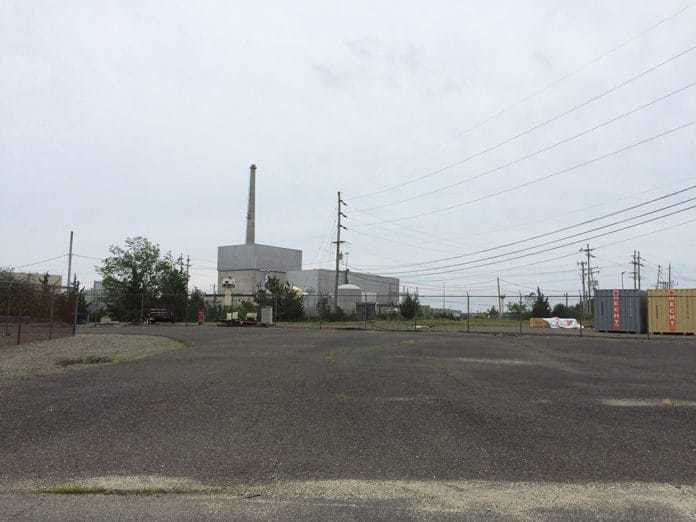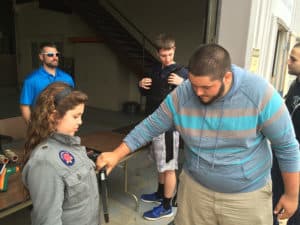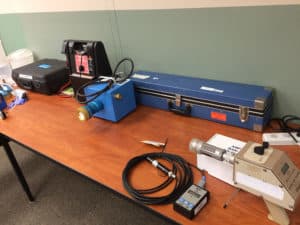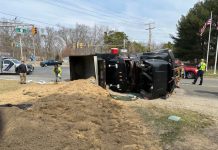
LACEY – Although some of the buildings of the Oyster Creek Generating Station tower over the trees and can be seen from Route 9, most people don’t know how operations work inside the plant. That is a notion officials aimed to change when they invited the public in for an Energy Education Day.

During the day, the plant’s training center was toured by students from Toms River Intermediate East, Toms River High School North, Lacey Township Middle School, and Stafford Township Intermediate School. In the evening, it was open to adult members of the community and scouts. The goal for adults is to show them how plant personnel work. For children, it is to introduce them to STEM (science, technology, engineering, and math) professions in the plant.
The training center is on a different portion of the property, apart from the more sensitive daily operations. But that didn’t mean that it was completely different.
There was a control room simulator in the training center. It’s normally used to train staff on daily operations, and how to react in case of an emergency.

The simulator is a room that is made to look as close to the real control room as physically possible, even down to the carpet, plant spokeswoman Suzanne D’Ambrosio said. It is so accurate that photography is not allowed because they don’t want the wrong people to know how it all works.
All of the equipment is stationed in large, green metal. There are scores of dials and levers, and a Star Trek-like wall of lit-up buttons and devices.
In the training scenario, the power went out. The lit-up buttons blinked. Sirens blared. Within seconds, the emergency generator came on and the kids would be required to fix the situation.
Rob Sales, senior reactor operator, said they demonstrate with the simulator, then talk kids through the actions.
The kids were impressed with this simulation, said Mike Strawser, simulator coordinator. Some of them were asking things like “What would happen if you pushed all the buttons?” Others came prepared, having studied the technology behind the plant and came armed with more detailed questions.

The simulator was one of the more dynamic representations of working inside a nuclear power plant. There were several other stations set up throughout the campus, demonstrating such things as security, rescue drills, and energy conservation. Some stations had equipment that one might not associate with a power plant, such as 3D printers.
In one session, the classes were split into teams to compete in a game show, answering questions about the origin of the word “atom” (it derives from “atoma,” meaning “uncuttable”) and what is the most used renewable energy source (it’s hydroelectric).
Some teens talked to staff about what kind of jobs would be available in the nuclear field. This was one of the goals for the plant this day, to open students’ eyes to the possibilities.
“There’s a lot of STEM opportunities for kids. They might not be right here, in Ocean County, but there is a lot of opportunity,” D’Ambrosio said.
Hopefully, students will come away from the day with the thought that they could pursue a career in radiation safety or any of the computer fields that the plant relies on daily, she said.






